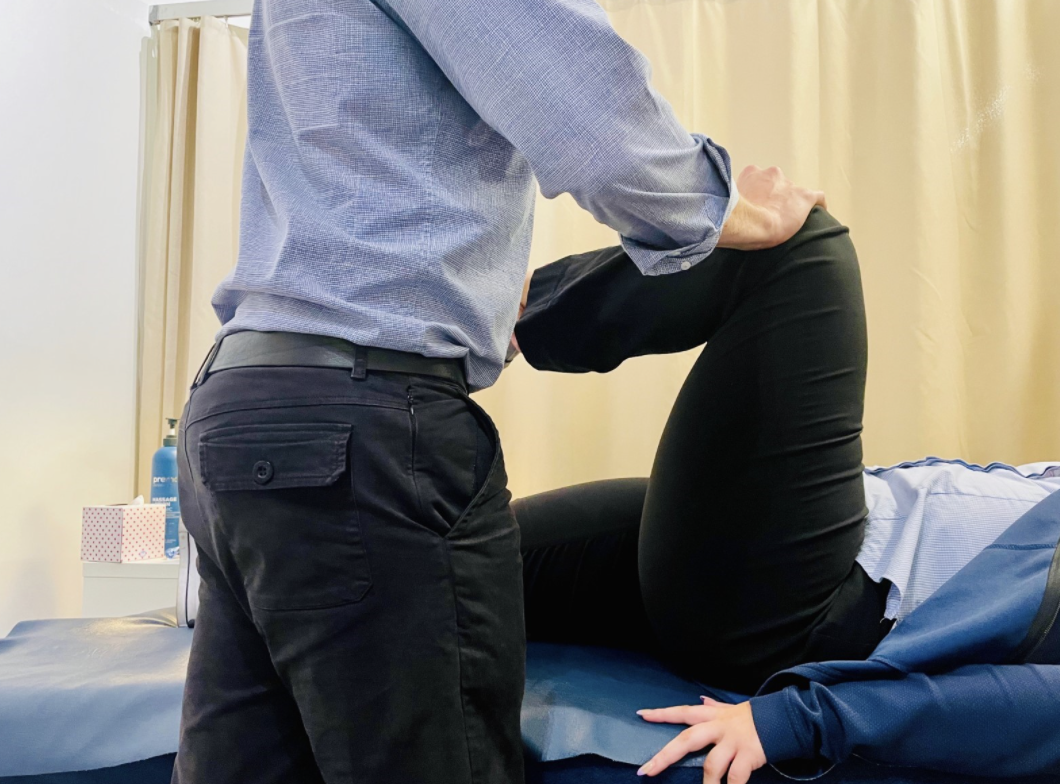What a Pain in the Buttock! Is it Arthritis or Soft Tissue or Nerve?
Wednesday, August 28, 2024
Do you know someone with buttock pain, and you’re wondering: Is it osteoarthritis? Is it a nerve syndrome? Is it bursitis? Is it gluteal tendinopathy? Differentiating between these common conditions will help ensure the best treatment and prognosis.

What does the buttock pain feel like?
If the buttock pain is radiating through hip, glute, groin, and thigh and it is worse in the first 30 minutes of the morning, this is reported for osteoarthritis.
If the buttock pain doesn’t extend past the knee, but is localised tenderness on and around the greater trochanter (lateral ridge at the top of the thigh bone), this is reported for soft tissue injuries like bursitis or gluteal tendinopathy.
If the buttock pain is a shooting, tinging, ‘electricity’ feeling along the leg, maybe even past the knee, or back pain & leg pain together, this is reported for nerve syndromes.
Buttock pain when sitting and lying? This is reported for soft tissue injuries like bursitis or gluteal tendinopathy. If the pain is while getting into or out of a seated position, this is reported for nerve syndromes.
What causes buttock pain?
Symptoms of osteoarthritis in the hip, causing buttock pain, include reduced range of motion, such as unable to cross legs; unable to tie shoelace, put socks on, etc.
If you notice the buttock pain improves with activity after period of rest, but prolonged activity worsens the pain, this is a symptom of soft tissue injuries.
If you have reduced or painful lumbar forward flexion, i.e. it hurts to bend forward to touch your toes, this is a symptom of nerve syndrome.
How to tell why do I have buttock pain?
A physical examination including hands-on testing, strength and stretch testing, by a trained professional, like the Physiotherapists at Physio Inq Engadine and Physio Inq Sutherland, will allow accurate diagnosis of the site and severity of the injury.
- Tests for Osteoarthritis in the hip: lying PROM (flexion & IR/ER w/ painful, bony end feel. May feel relief with leg traction.
- Tests for gluteal soft tissue injuries: single leg stance test (pain after 30s); palpation of GT, reduced strength +/- pain with side lying leg raise; combined hip Flexion, Adduction & resisted External rotation
- Tests for buttock nerve syndrome: slump test; Straight leg raise; side lying combined hip flexion, adduction & IR; patella reflex testing.
Can Physiotherapy help buttock pain?
Absolutely, seeing a Physiotherapist, such as the staff at Physio Inq Engadine and Physio Inq Sutherland, can assist with the diagnosis and treatment of symptoms causing buttock pain including:
- Osteoarthritis of the hip
- Gluteal tendinopathy
- Gluteal muscle strain
- Bursitis
- Sciatica
- Piriformis syndrome
- Pinched nerve
- Gluteal deep syndrome
- Other buttock nerve syndromes
What is the treatment for buttock pain?
Gold standard treatment for the common conditions causing buttock pain is physiotherapy management. Following expert testing and diagnosis, our Physiotherapists will recommend an individually tailored treatment program, which may include:
- Symptom management strategies
- Manual therapy techniques
- Active range of motion joint mobilisations with movement
- Soft tissue release
- Progressive home exercise prescription for functional improvements
- Neural gliders / sliders exercises
Prognosis has been shown to be positively influenced with physiotherapy interventions.
Buttock pain is a common issue treated by Physiotherapists. At Physio Inq, our Physiotherapists will be able to do a thorough testing and diagnosis, as well as provide gold standard treatment to help you live a life with less limits. Contact us today to book your consultation.

